
Series: America’s Dangerous Trucks
Inside the Battle to Prevent Deadly Crashes
This story describes fatal car-crash injuries.
ProPublica is a nonprofit newsroom that investigates abuses of power. Sign up to receive our biggest stories as soon as they’re published.
“America’s Dangerous Trucks” is part of a collaborative investigation from FRONTLINE and ProPublica. The documentary premieres Tuesday, June 13, 2023, at 10 p.m. EDT/9 p.m. CDT on PBS stations (check local listings) and will be available to stream on YouTube, the PBS App and FRONTLINE’s website.
It was a little after 7 p.m. and Ricardo Marcos was rolling through the darkness in his gray Hyundai Elantra.
Marcos had spent a long day toiling as a mechanic at a trucking company in McAllen, Texas, a sunbaked city nestled right on the U.S.-Mexico border.
Now he was headed home on U.S. Route 281, a long swath of asphalt that runs parallel to the Rio Grande in this part of Texas. His wife, Irma Orive, was waiting for him.
But Marcos, 61, never made it.
Big commercial trucks are ubiquitous in this part of the world, an endless stream of massive diesel-powered vehicles ferrying goods across the border, and on his drive home, Marcos encountered a large truck pulling a 53-foot trailer. The truck edged out of a driveway and began, slowly, to turn left onto the road, blocking traffic in both directions. It was as if someone had erected a big steel wall.
Video shows what happened next on that night in 2017. Traveling at more than 40 mph, Marcos’s Hyundai slammed violently into the larger vehicle and became wedged beneath it. The impact ripped the top half of the car apart. Marcos did not survive.
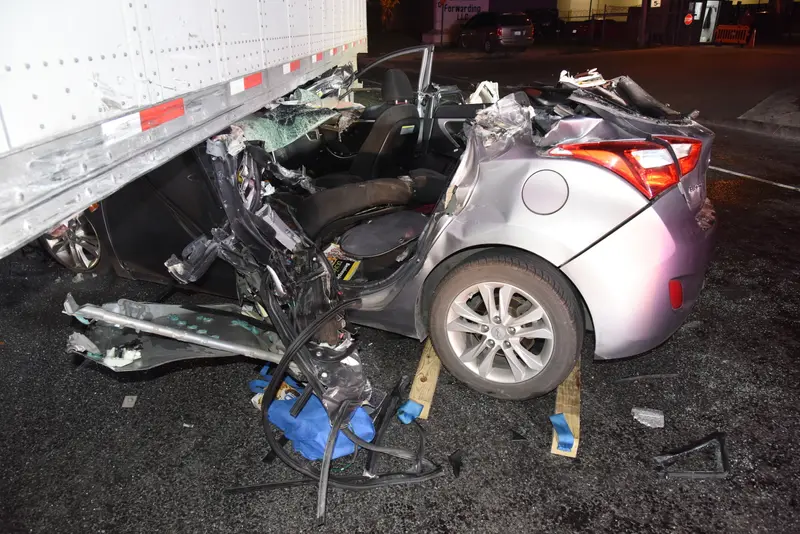
The collision did terrible things to his body, breaking his ribs, lacerating his liver and spleen, snapping his neck and damaging the frontal lobes of his brain, according to the medical examiner’s report.
An investigator with the local police department blamed the collision on the truck driver, who was initially charged with negligent homicide, though charges were eventually dropped. ProPublica and FRONTLINE were unable to contact the trucker.
“I still miss him. I miss him every day,” said his widow, 70. “We did everything together.”

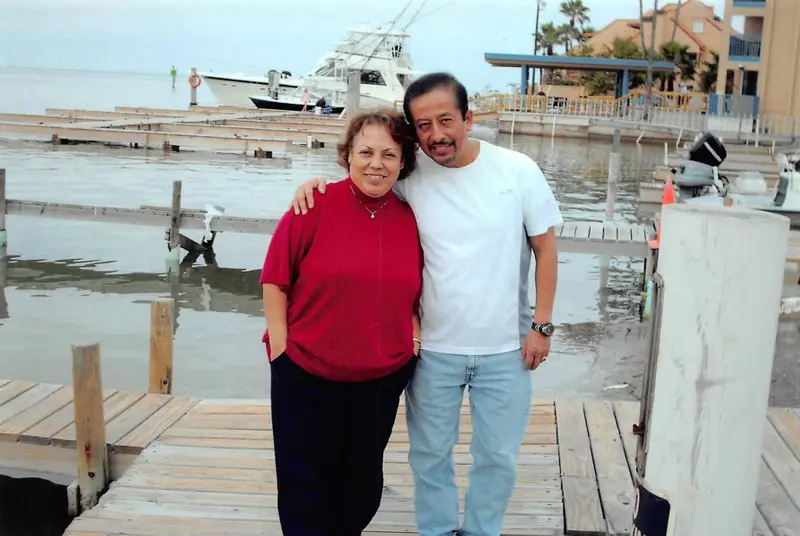
The incident was awful and tragic. But it wasn’t particularly uncommon. Collisions in which a passenger vehicle such as a car, SUV or pickup truck slides beneath a large commercial truck are called underride crashes in the jargon of the transportation industry. And they happen all the time: Each year hundreds of Americans die in this type of collision.
The federal government has been aware of the problem for at least five decades.
Reporters for ProPublica and FRONTLINE obtained thousands of pages of government documents on underride crashes — technical research reports, meeting notes, memoranda and correspondence — dating back to the 1960s. The records reveal a remarkable and disturbing hidden history, a case study of government inaction in the face of an obvious threat to public wellbeing. Year after year, federal officials at the National Highway Traffic Safety Administration, the country’s primary roadway safety agency, ignored credible scientific research and failed to take simple steps to limit the hazards of underride crashes.
NHTSA officials failed to act, in part, because they didn’t know how many people were killed in the crashes. Their poor efforts at collecting data over the years left them unable to determine the scale of the problem. This spring the agency publicly acknowledged that it has failed to accurately count underride collisions for decades.
According to NHTSA’s latest figures, more than 400 people died in underride crashes in 2021, the most recent year for which data is available. But experts say the true number of deaths is likely higher.
Records show the agency often deferred to the wishes of the trucking industry, whose lobbyists repeatedly complained that simple safety measures would be prohibitively expensive and do lasting damage to the American economy. During the 1980s, for example, industry leaders argued they couldn’t afford to equip trucks with stronger rear bumpers, which are also called rear underride guards; the devices are meant to prevent cars from slipping beneath the trailer during a rear-end collision. The beefier, more robust rear guards would’ve cost an additional $127 each, according to industry estimates.
David Friedman was a top official at NHTSA during the Obama years. “NHTSA has been trying, for decades, to do something about underride deaths. And yet over and over, they haven’t made the progress that we need. Why? Well, I think part of it is because industry just keeps pushing back and undermining their efforts,” said Friedman, who served as the agency’s acting administrator in 2014. “There are so many hurdles put in the way of NHTSA staff when it comes to putting a rule on the books that could address issues like underride.”
The technology at issue — strong steel guards mounted to the back and sides of trucks — is simple and “relatively inexpensive,” Friedman argued. “The costs are small.”
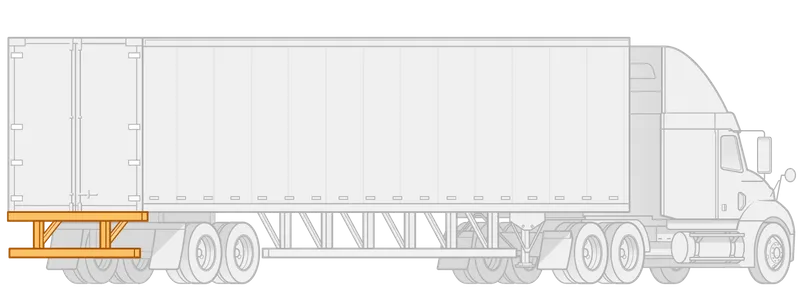
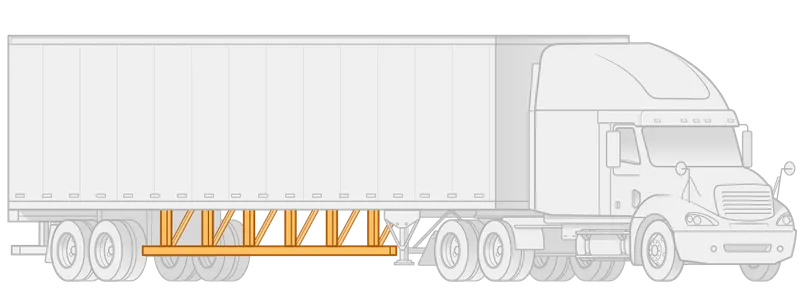
The circumstances surrounding underride crashes vary widely. In some cases, the driver of the smaller vehicle is at fault — they are speeding, texting or simply not paying enough attention to the road. In other cases, the trucker is to blame. Take, for example, a crash that occurred in Caledonia, Wisconsin, in 2020. A truck going roughly 40 mph blew past a stop sign at a four-way intersection. A Volkswagen SUV plowed directly into the side of the larger machine, became trapped between the wheels of the truck and was dragged down the block as shards of glass, steel and plastic shot into the air like shrapnel; miraculously, the SUV driver survived. Police cited the trucker, who declined to be interviewed.
The biggest trucks on the road — properly called tractor-trailers or semi trucks — consist of two parts. At the front is the tractor, which is equipped with a high-horsepower engine capable of pulling 80,000 pounds. A hitch connects it to the trailer, which can range from 28 feet to more than 50 feet long. The typical semitrailer rolls on an array of giant wheels, its floor sitting nearly 4 feet off the ground.
Modern automobiles come equipped with a host of meticulously engineered safety technologies. There are bumpers and crumple zones meant to absorb kinetic energy and reduce the violence of an impact. There are airbags to cushion the driver and passengers.
But in an underride crash, these technologies are rendered moot by the height difference between a large truck and the average passenger vehicle. Typically, it is the windshield of the smaller vehicle that takes the brunt of impact, slamming into the bottom edge of the trailer as the steel pillars holding up the car’s roof collapse. In many cases the airbags don’t even deploy.
Without Side Guard
With side guard
Side Guard
WITHOUT SIDE GUARD
WITH SIDE GUARD
WITHOUT SIDE GUARD
WITH SIDE GUARD
This violent sequence of events often produces grievous injuries. Start looking at underride crashes and you’ll quickly notice a pattern of awful head injuries: broken skulls, severely damaged brains, even decapitations. Some victims suffer crushing injuries to the torso or get speared in the chest by jagged chunks of steel.
Truck drivers are rarely harmed in the crashes.
NHTSA officials and Transportation Secretary Pete Buttigieg declined to be interviewed by ProPublica and FRONTLINE. NHTSA did not respond to written questions from the news organizations, including about why the agency had moved so slowly to address the lethal hazards posed by underride collisions. In a statement, NHTSA defended its record, noting that it had recently created a committee to study the issue and developed new safety rules; it had been directed to take those steps by federal legislation passed in 2021. “Safety is the top priority for the U.S. Department of Transportation and NHTSA,” the agency said.
The American Trucking Associations, a trade group representing the nation’s major commercial haulers, for decades opposed safety regulations that would’ve improved rear underride guards and saved lives. Dan Horvath, the ATA’s vice president for safety policy, said he has little information about the organization’s past positions, but he acknowledged that costs were “a very real factor” for the industry.
Trucking companies now spend billions annually to improve safety, investing in everything from new braking systems to stringent drug-testing for drivers, Horvath said. “Safety is not just a slogan with our members,” he added. “It’s really the fundamental foundation of their operations.”
Eventually the ATA came to support government rules aimed at improving rear guards.
Still, the ATA and other industry groups are continuing to fight congressional efforts to require semitrailers to be equipped with side guards, which could prevent underride crashes like the one that killed Marcos. They said there’s not enough research to support a government mandate, which would impose huge costs on businesses that operate on thin profit margins.
During these five decades of industry resistance and government paralysis, thousands of people have died.
I. Decades of Delay
The year was 1967 and Hollywood star Jayne Mansfield was riding in the front seat of a gray Buick Electra, a massive boat of a sedan, cruising along U.S. Route 90 in Louisiana. It was after 2 in the morning. Ahead of the Buick, a semi truck had slowed to about 35 mph.
Mansfield’s driver failed to brake in time, striking the rear of the vehicle. The Buick’s long hood slid beneath the belly of the semitrailer. The top half of the car was destroyed. The actress and two others were killed. Mansfield’s three children, who’d been riding in the back of the vehicle, survived. One of them, Mariska Hargitay, is now an actor in the “Law & Order” TV franchise.

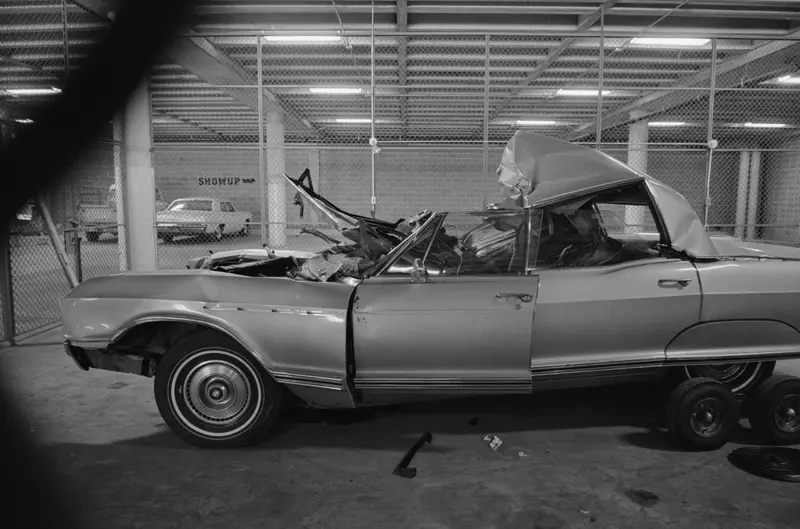
In the days after Mansfield’s death, leaders at the Department of Transportation began looking into underride crashes — and they quickly made a worrisome discovery.
The federal regulations in place at the time required that large trucks and semitrailers come equipped with a rear bumper, known as a rear guard, meant to prevent underride collisions. But the rules were lax: The guard could hang as much as 30 inches off the ground, far higher than the typical car bumper, and didn’t have to cover the full width of the truck or trailer. And it didn’t have to meet any strength standards.
Most rear guards of this era consisted of three pieces of rectangular steel: a horizontal bar welded to two vertical beams that bolted to the bottom of the trailer. Often crudely fashioned from thin, low-grade metal, the guards did little to prevent underrides — they had a tendency to simply collapse when hit.
A bigger guard built from stronger materials, top officials realized, could save lives.
They announced plans for a new regulation requiring tougher, more substantial guards. “Accident reports indicate that rear end collisions in which underride occurs are much more likely to cause fatalities than collisions generally,” the department noted in a 1969 statement regarding the proposed regulation.
The proposal was not well received by the major trucking companies or the firms that built and sold trucks and semitrailers. In a 1970 letter to the department, the ATA complained about “the unfairness of inflicting upon the industry the heavy cost penalty which would be brought about by the incorporation of a guard of the proposed type.”
The Truck Trailer Manufacturers Association, a lobbying outfit representing semitrailer builders, had little desire to make safer rear guards. In correspondence with the department, the TTMA said it would be “far more practical” to force Volkswagen and other companies making compact cars to produce larger vehicles that were less likely to slip beneath a truck.
Facing backlash, the department scuttled its proposed regulation. “At the present time, the safety benefits … would not be commensurate with the costs of implementing the proposed requirements,” officials wrote in a statement explaining their decision.
Congress in 1970 established NHTSA, giving the new agency broad powers to reduce the number of deaths and serious injuries on America’s roadways. The agency would function as a unit within the larger Department of Transportation, a vast and sprawling bureaucracy tasked with overseeing everything from ships and planes to trains and automobiles. It was a moment of growing public concern over the carnage on America’s roadways — concern fueled in part by consumer advocate Ralph Nader’s damning exposes.
NHTSA immediately took on the underride issue, commissioning a series of studies by scientists in Arizona who ran Chevrolet Impalas and VW Rabbits into rear guards mounted on a simulated semitrailer body. The researchers determined the guards needed to be built bigger and stronger to prevent underrides.
Days before Ronald Reagan was sworn in as president in 1981, NHTSA went public with a revised rule that would beef up the rear guards on trucks and semitrailers. The cost was minimal: The agency estimated the new guards would cost $50 more per vehicle.
But the ATA and other trade organizations voiced their unhappiness about the added expense, which they believed would come out to $127 per trailer. As they had a decade earlier, they said the guards cost too much and would not save many lives.
After Reagan took office, NHTSA underwent a dramatic transformation. The new president had campaigned on promises to slash government regulation, which he saw as an unfair burden on the American economy, and he quickly began reshaping the executive branch.
He installed a new administrator at NHTSA, Raymond Peck Jr., a former lobbyist for the coal industry, who fired agency workers, rescinded existing safety rules and delayed regulations that were under development. The underride rule was jettisoned.
The entire regulatory process at NHTSA “came to a halt,” recalled Lou Lombardo, a physicist who was at the agency at the time. “We had nothing, nothing, nothing to do.”
Asked if people died as a result of the agency’s failure to act on rear underride crashes, Lombardo had an instant reply: “Oh heck yes.”
II. Devastating Consequences
Matt Brumbelow demolishes cars and trucks for a living.
At a sophisticated laboratory near Charlottesville, Virginia, he spends his days smashing brand new vehicles into a slab of superhard concrete and steel. The goal, always, is to identify hidden vulnerabilities — doors that collapse catastrophically, car seats and headrests that could worsen whiplash injuries during a violent impact. A complex pulley system is used to yank the pristine cars, trucks and SUVs — loaded with sensors, and, in some cases, biomechanical dummies — into the test block.
“I love it,” said Brumbelow, who has a degree in mechanical engineering from the University of Virginia. “It’s definitely more than a job.”
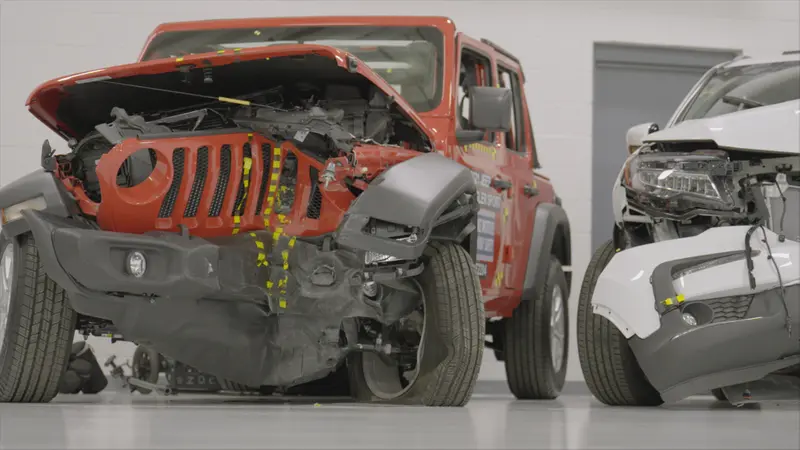

He gave journalists from ProPublica and FRONTLINE a tour of the facility, which is run by the Insurance Institute for Highway Safety, a nonprofit organization dedicated to reducing the harm done by motor vehicle crashes on the nation’s roads. The lab looks like the world’s tidiest and best-lit auto salvage lot — horribly mangled vehicles are everywhere.
By the 1990s, NHTSA had finally adopted a regulation requiring tougher rear guards. The new requirements only applied to newly built semitrailers; older models that were already on the road were exempted.
It took effect in 1998, more than 30 years after Mansfield’s death first drew attention to the issue.
In time, though, it became clear to Brumbelow and his colleagues that this landmark safety regulation was deeply flawed. Sifting through the data from 1,070 collisions, Brumbelow and his team noticed a distinct pattern: Guards built to the new federal standard were still failing, leading to severe underride crashes.
NHTSA, he believed, hadn’t done enough testing on these new guards to see how they would perform under real-world conditions. And other countries had established much more stringent standards — guards used just across the border in Canada, for example, had to be far stronger than those required under NHTSA’s 1998 rule.
By 2010, the institute had purchased a fleet of Chevrolet Malibu sedans and was slamming them into semitrailers equipped with guards meeting the updated federal standard. The results were dismal. “In crash tests that we were running at 35 miles an hour, they were failing,” he recalled.
Weak Rear Guard
Stronger Rear Guard
WEAK REAR GUARD
STRONGER REAR GUARD
WEAK REAR GUARD
STRONGER REAR GUARD
Brumbelow and his colleagues tested guards made by the eight largest semitrailer manufacturers in the U.S. All but one of them collapsed catastrophically; if these had been real crashes, the people in the cars would’ve been killed or badly injured.
One of the Malibus is still sitting on the floor of the lab. It bears the signature wounds of an underride crash: There is no damage to the bumper and the hood is only mildly dented, but the windshield has been destroyed and the roof is shredded. The dummy in the driver’s seat fared very poorly.
“It’s clear the standard is inadequate,” he said, adding that in his view NHTSA is making crucial policy decisions based on “bad science.”
NHTSA’s dubious decisions have had devastating consequences in the real world.
In 2013, Marianne Karth was behind the wheel of her Ford Crown Victoria sedan, traveling through Georgia on her way to a family wedding. Two of her daughters, Mary and AnnaLeah, were in the back seat; her son Caleb was sitting next to her in the front.
“I came upon slow traffic. I slowed down and a truck driver — apparently — did not. He hit us,” she recalled. Karth’s Ford spun around, then slammed into the rear end of another semi truck and became wedged underneath it.
The truck’s rear guard, which Karth believes met the 1998 federal standard, “just came off onto the ground. It totally came off the truck.”
Photos taken at the crash site show debris scattered all over the roadway. To extricate Karth and her children, a rescue team equipped with hydraulic cutting tools hacked the car apart.
The collision killed 17-year-old AnnaLeah instantly; her sister, 13, survived for a few days in the hospital before dying of her injuries. Caleb sustained a minor concussion.
In the years since the crash, Karth and her husband, Jerry Karth, have channeled their grief into constant activism — petitioning NHTSA, helping to draft federal legislation, meeting with members of Congress, talking to anybody who will listen.

If the truck had been equipped with a stronger guard, said Karth, “it’s possible that my daughters would be alive.”
After witnessing the tests conducted by Brumbelow and the Insurance Institute, many of the country’s major trailer companies voluntarily began building better guards that are far more capable of withstanding a collision.
“We place such a high value on the safety of both our customers and the driving public that we have chosen to provide this improved level of safety and performance as a standard feature — and at no additional cost,” said Bob Wahlin, president and CEO of Stoughton Trailers, a large manufacturer, in a 2016 press release touting the company’s new guards.
In the view of Andy Young, an attorney and truck driver who has testified before Congress about underride collisions, “the industry made changes because they were worried about bad publicity. … They were embarrassed.”
NHTSA, however, did not spring into action. Instead, the agency allowed companies to continue building trailers with the weaker guards. In 2022, more than a decade after Brumbelow’s tests, NHTSA updated its rules. Even then, the agency acted only after the passage of a federal law directing it to do so.
Some safety advocates panned the revised regulation, noting that most big trailer companies are now building guards that are more robust than those required by the new government rule. They saw it as a step back.
“The record speaks for itself: There’s no way you can say that NHTSA acted swiftly to protect people from this known danger,” said Zach Cahalan, executive director of the Truck Safety Coalition, a network of crash survivors and victims’ families. “This is a story I can tell you over and over for different issues. You can’t tell me that people are laser focused on safety.”
While the government has made what Cahalan calls “incremental progress” on rear underride crashes, it has yet to craft regulations addressing collisions that occur when a passenger vehicle runs into the side of a large truck. Such accidents kill hundreds of people annually.
III. Side Guard Safety
Eric Hein sat on a bench on the grounds of a small Methodist church in the rugged Sandia Mountains north of Albuquerque, New Mexico. From time to time, a semi truck chugged up a steep four-lane road nearby, sending a low rumble through the canyon.
In his hands he held photos of his teenage son, Riley Hein, who was killed in a collision with a heavy truck in 2015. He wept softly. The years, Hein said, have scarcely dulled his sorrow.
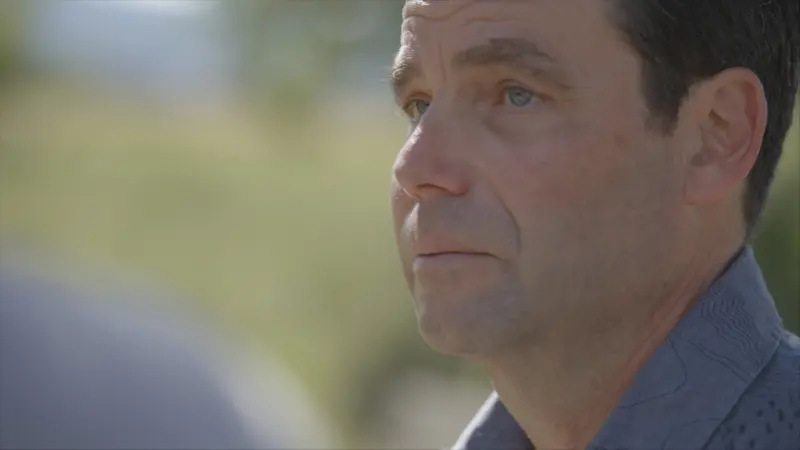
Riley Hein was driving to high school when an 18-wheeler drifted into his lane. The teen’s Honda Civic smacked into the side of the massive vehicle and became wedged beneath it, trapped between the front and rear wheels.
Instead of stopping, the trucker pulled Riley Hein and his damaged Honda down the highway for half a mile. The car erupted in flames. By the time firefighters were finally able to extinguish the fire, it had been reduced to a husk of charred metal. Riley Hein — a smiley, gregarious teen who played trombone in the school marching band — was dead.
ProPublica and FRONTLINE reporters repeatedly tried to contact the driver, but were unable to locate him.
“We had to sell the house and leave after Riley was killed,” Eric Hein recalled. “It was just too quiet. And it was very painful driving down the highway and seeing the place where his car burned.”

Riley Hein’s story points to another problem: Even when semi trucks are equipped with rear guards, there is nothing to keep a car from hitting the side of a truck and getting stuck beneath it. NHTSA has never adopted regulations requiring any type of underride guard on the sides of trucks.
During the late 1960s, the Department of Transportation said publicly that it intended to “extend the requirements for underride protection to the sides of large vehicles.” But department officials quietly dropped the idea. In 1991, NHTSA revisited the concept and determined that it would be too costly.
Over the past several decades, engineers have developed a host of devices that can be mounted to the underbelly of a semitrailer to prevent underride crashes like the one that took Riley Hein’s life. Most are built from a lattice of thick steel tubes. Wabash National, a major trailer builder based in Indiana, has patented several designs.
But the technology has largely been shunned by the trucking industry. Wabash has never put its side guards into production. (Many semitrailers are equipped with lightweight panels that hang between the front and rear wheels; these are not side guards. These devices are meant to improve fuel-efficiency but don’t provide any safety benefits — they’ll collapse during a crash.)
Hein was shocked when learned about this history. The semitrailer that smashed into his son’s Civic was built by Utility Trailer Manufacturing Company, one of the biggest players in the U.S. market. Eric Hein decided to sue the company, alleging they’d been “negligent for not putting on side underride guards on the trailer that killed Riley.”
It was a relatively novel strategy, and his attorney Randi McGinn, was initially skeptical, pointing out that there had been few successful legal cases built on the theory.
But as McGinn and her co-counsel, Michael Sievers, dug into the evidence, they became increasingly convinced that Hein’s instinct had been right. During discovery they obtained a seven-page document signed by executives from Utility and 10 other semitrailer companies. The document, drafted in 2004, was a pact struck by the biggest companies in the business, a pledge to work cooperatively — and secretly — to thwart any lawsuits stemming from side and rear underride crashes. The arrangement had been orchestrated by Glen Darbyshire, an attorney for the TTMA, the trade group.
As part of the agreement, the firms would keep crucial safety information confidential. That material — including “documents, factual material, mental impressions, interview reports, expert reports, and other information” — wasn’t to be shared with anyone outside of the circle.
Darbyshire declined to be interviewed by ProPublica and FRONTLINE, as did the TTMA.
To McGinn, it seemed the companies had spent years battling lawsuits rather than directing their engineers to address an obvious hazard. “This is the same thing that the tobacco companies did — rather than fix the problem, or admit the problem,” said McGinn. “Corporations have to be responsible for safety, too. They can’t put their profits before the lives of 16-year-old kids.”
In the course of the litigation, Jeff Bennett, Utility’s vice president for engineering, said he’d spent 32 years with the company and had never heard of a car getting trapped under a trailer, other than in the Hein case. The company, he testified, had never designed or built a side guard.
Utility executives argued that adding side guards to trailers would unleash a cascade of new problems: They could cause trailers to get hung up on steep loading ramps, interfere with the functioning of brake lines, and fatigue the frame of the trailer.
After a two-week trial in 2019, jurors in Albuquerque found Utility negligent, ordering the company to pay nearly $19 million to the Hein family. It was one of the largest verdicts to hit the trucking industry in recent years.
Utility did not respond to emails from FRONTLINE and ProPublica requesting comment.
In a statement issued after the trial, the company said, “Utility Trailer does not believe it negligently designed, tested, or manufactured its trailers. Utility Trailer presented uncontroverted evidence that adding a side-underride guard to its trailers would make the trailers more dangerous to the motoring public.”
Since then, however, the company’s stance has shifted dramatically. Utility now sells what it calls a “side impact guard,” offering it as an additional safety feature on its trailers. In its sales brochure, Utility says the guard has been mounted to “over 20 trailers” currently on the road.
In recent years, Sens. Kirsten Gillibrand, D-N.Y., and Marco Rubio, R-Fla., have repeatedly pushed legislation that would require semis and other heavy trucks to have some sort of side guard. Introduced three times since 2017, the bill has not made it out of committee.
While the senators haven’t been successful with the legislation, they managed to insert language instructing NHTSA to study side guards into the infrastructure bill signed by President Joe Biden in November 2021.
“You know, people don’t like change. And certainly, you know, the trucking companies don’t want to have to invest more money necessarily on safety,” Gillibrand said, when asked about the criticism. “But this is something that is necessary.”
Rubio declined to be interviewed by FRONTLINE and ProPublica.
The industry remains strongly opposed to side guards. In one letter to Congress, the ATA said there wasn’t “sufficient science” on side guards and urged the government to conduct more research on the devices before mandating them.
“When we talk about installing side underride guards, we’re focusing on mitigation after that crash has already happened,” said Horvath, the ATA’s top safety official. “Unfortunately, resources are not limitless. And if I’m going to direct resources as a trucking company, I want to focus on avoiding that crash from ever occurring.” Big trucking companies are supportive of new electronic technologies such as automatic emergency braking systems, which use cameras or sensors to detect road hazards and halt the truck before it crashes, or engine modules that limit the speed of a truck, he said.
Lewie Pugh, a retired trucker, is executive vice president of the Owner-Operator Independent Drivers Association, a group representing individual drivers and small trucking firms. “Speaking as somebody who has real-world experience driving a truck, I believe there are probably certain instances, certain situations where side underride guards will work and save lives,” Pugh said. “I also believe that there are certain instances where side underride guards will cost lives, and we don’t know the unintended consequences.”
If you ask Pugh, he’ll tell you that truckers have every right to be skeptical of both the government and new technologies. In 1975, NHTSA adopted a regulation requiring anti-lock brakes on large trucks and trailers. The new braking systems, however, proved to be glitchy and prone to failure, leaving truckers rolling down the road without any way to stop.
He worries that if side guards are mandated, the costs will hit independent truckers and small operators hard.
“Research is key, and don’t use the truck drivers and the trucking companies as the guinea pigs,” Pugh said. “Let’s make sure this stuff is working.”
IV. Counting Crashes
NHTSA operates on a $1.3 billion annual budget. The agency is responsible for everything from setting standards for motorcycle helmets to investigating defective vehicles to studying automated driving technologies. It is America’s primary roadway safety agency.
And yet NHTSA is unable to count the number of underride crashes that occur in the U.S. each year.
An analysis of the agency’s data by ProPublica and FRONTLINE indicates that more than 400 people, including several truckers, died in underride collisions in 2021, the most recent year for which complete figures are available.
But the true death toll is likely far higher. Pointing to a series of studies dating back to the 1970s, experts say NHTSA has never been able to properly track underride crashes, despite spending hundreds of millions of dollars on data-collection efforts.
“There is a severe undercounting of the number of underride crashes in this country,” said Harry Adler, a co-founder of the Institute for Safer Trucking, an activist group that follows the data closely.
Part of the problem is that NHTSA relies on local and state law enforcement officers to investigate serious collisions and document their findings. Those police reports are sent to NHTSA and compiled into a single, mammoth database, cataloging tens of thousands of incidents every year.
The agency, however, has never required these first responders to track underride crashes and has offered police little training on the issue. As Adler notes, “only 17 states have a field on their police accident reports to indicate if an underride occurred.”
Underride “fatalities are likely underreported,” stated the Government Accountability Office in a 2019 report urging NHTSA to do a better job of educating police officers and other law enforcement personnel about the crashes.
NHTSA’s own data can be conflicting. ProPublica and FRONTLINE compared two agency databases. One contained detailed information, including photos and crash diagrams, on 27 fatal side and rear underride truck collisions. In the other one — the primary data set of fatal crashes — only three of those 27 accidents were listed as underrides.
Recently, the agency acknowledged that its numbers on underride crashes are unreliable. NHTSA said it has recently taken steps to improve its data-collection practices.
The issue is not academic. When NHTSA looks at a new safety rule, it makes strict economic calculations. How many lives will be saved by the regulation? How much will it cost businesses to implement the rule?
NHTSA generally won’t adopt a new safety measure unless it can be shown to work and to cost the industry no more than $12.5 million for each life it saves.
Critics said the undercount of fatalities played an important role this spring, when NHTSA released new research on the costs and benefits of side guards.
The agency determined the devices aren’t economically feasible — they would be too expensive and save too few lives. According to NHTSA’s calculations, mounting the devices on every new semitrailer in the U.S. would cost upwards of $778 million and would only prevent 17.2 deaths per year.
Some experts, though, are skeptical of NHTSA’s calculations. They said that NHTSA made faulty assumptions about the efficacy of side guards and the number of lives at risk. The National Transportation Safety Board, an independent federal agency, has said publicly that NHTSA’s analysis underestimated the potential benefits of the guards.
Brumbelow’s organization concluded that a more realistic estimate of the lives that side guards would save each year is 159 to 217, far higher than what NHTSA found.
The higher number flips the cost-benefit equation in favor of requiring trucks to have side guards.
“There are hundreds of lives that are being lost every year in side underride crashes,” he said. “The system that would be needed on a trailer to prevent so many of those fatalities from occurring is not overly complex.”
NHTSA, he concluded, needs to take the matter “more seriously.”
V. “Complete Success”
Against one wall in a crowded workshop in Cary, North Carolina, are an array of tool chests and welding equipment. Hunks of steel and extruded aluminum — truck parts — lie on a tall workbench. A shelving unit holds several child car seats.
In the center of the space, Aaron Kiefer is sorting through a pile of manilla folders. He is a mechanical engineer and accident reconstructionist. Clients — insurance firms, attorneys and, quite often, trucking companies — hire him to figure out what transpired in the moments before a serious crash.

Kiefer has plenty of work. In recent years America’s streets and highways have become more perilous, with fatal collisions of all types increasing significantly; Buttigieg, the transportation secretary, recently declared it a “national crisis.” Deaths due to truck crashes have surged by nearly 50% over the past decade, to 5,788 in 2021; nearly 155,000 people were injured that year.
Kiefer’s case files are the stuff of nightmares. One particularly gruesome investigation involved a car that had been cut in half by an encounter with a semi truck. Looking at photos from the crash, which occurred in Alabama, he said, the auto “passed all the way underneath the trailer.” He added, flatly, “It was not a survivable crash.”
Kiefer said he’s investigated “at least 100” underride collisions. “Seeing these types of accidents, over and over, has become increasingly a frustration of mine, personally,” he explained. “When you have this mismatch between the commercial vehicle and the passenger vehicle, the passenger vehicle always suffers. And I feel like there are reasonable ways to prevent these types of accidents.”
In hopes of reducing this roadway violence, even a little, Kiefer has designed a side guard using superstrong polyester webbing — the same material is used to lift extremely heavy cargo — attached to a matrix of steel bars. The goal is to get the trucking industry to adopt the device, which weighs 400 pounds, far less than other side guards; the lighter weight should translate into better fuel efficiency and other benefits for truckers.
On a warm day last fall, Kiefer staged a test of the device, dubbed a Safety Skirt, on a huge square of asphalt at the North Carolina State Highway Patrol training center in Raleigh. It was a grassroots effort. Welders at Maverick Metalworks, a local business, had helped Kiefer fabricate the guard. A salvage yard had donated a sacrificial Nissan Altima, which was delivered by volunteer from a nearby towing company.
Kiefer brought an old, battered semitrailer equipped with his guard to the facility, which under normal circumstances is used by police practicing high-speed driving techniques. He was planning a T-bone-type crash: The Nissan would strike the side of a trailer at a 90-degree angle. Marianne and Jerry Karth were on hand to witness the event, as was Lois Durso, an activist who had driven up from Florida with her husband.
With police officers and local reporters watching, the car was towed toward the trailer at 35 mph, smacked into the guard with loud thud and bounced off. The blow crunched the hood of the Nissan and set off the airbags, but no underride had occurred. It worked. “Yes! Yes! Yes!” shouted Marianne Karth.
“Complete success,” Kiefer said, smiling. “This is awesome. It’s a step towards highway safety.”
Now he just has to get NHTSA and the trucking companies to agree.
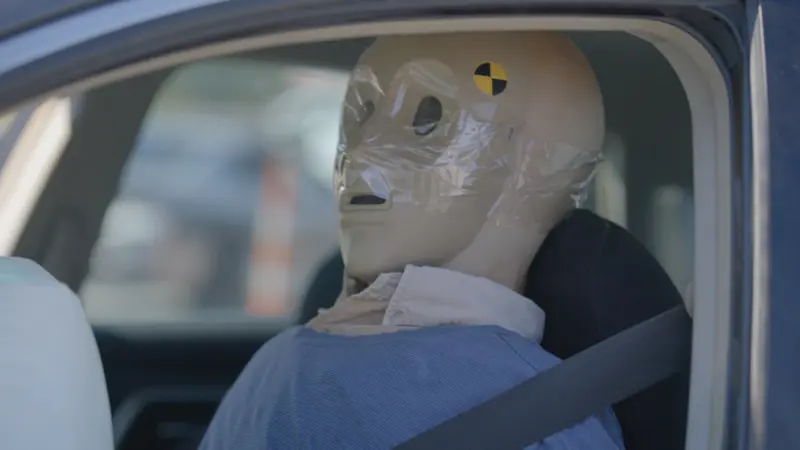
Do You Work for the Federal Government? ProPublica Wants to Hear From You.
We’re expanding our coverage of government agencies and federal policy. With your help, we can dig deeper.
Reporting contributed by Jeff Ernsthausen of ProPublica and Gabrielle Schonder and Chantelle Lee of FRONTLINE. Design and development by Lucas Waldron of ProPublica.




